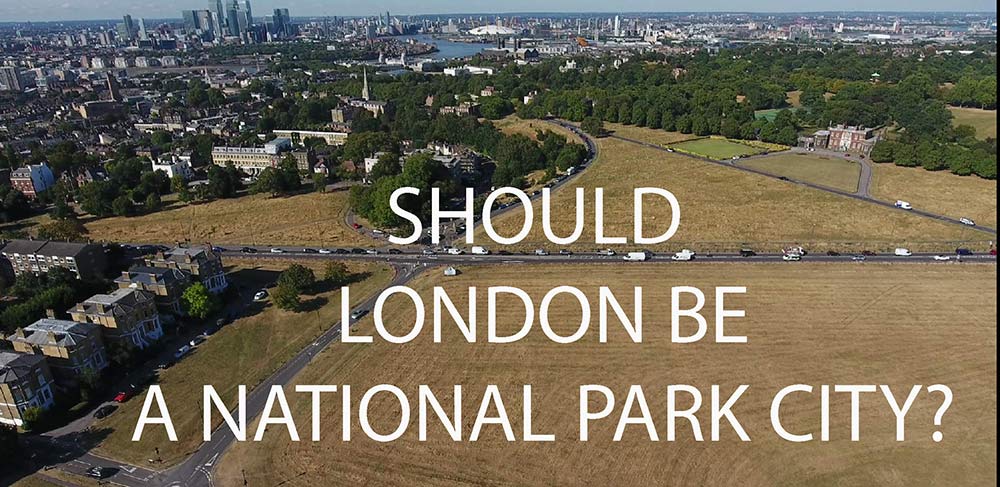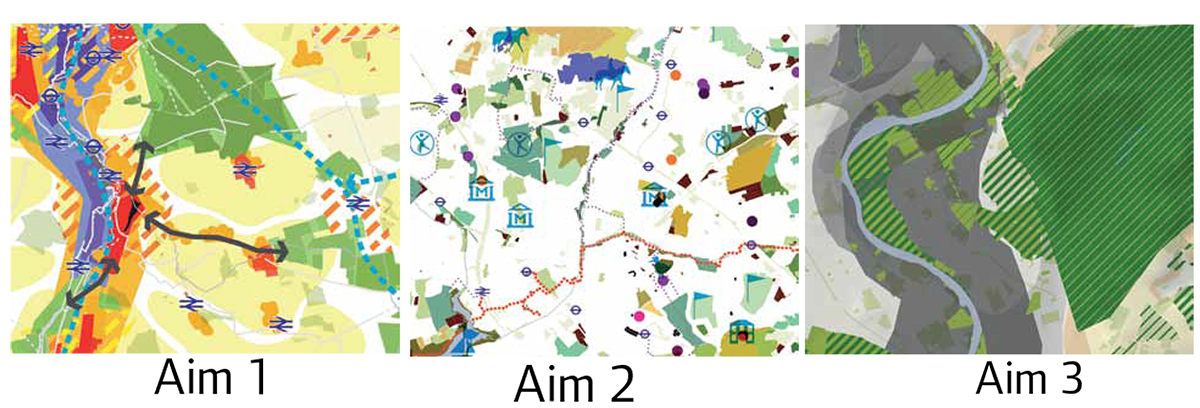London National Park City? or Green Grid? or Landscape Strategy?

Reading about the idea of making London a National Park City, I assumed the idea was to establish a National Park Authority for London. As Peter Massini explained at the presentation of the 2017 Draft London Environment Strategy, it is not. So the idea is nothing but hot green air.
The national park idea began as America’s ‘answer’ to its lack of castles, mansions, cathedrals and other famous art-historical sites. Britain’s national parks were conceived as our ‘answer’ to America’s national parks. In practice, they have delivered some funds, some additional planning control, a lot of advertising and a lot of tourists. Hardly any national park land is owned by the national park authorities.
Government aims for National Parks are to Conserve and enhance natural beauty, wildlife and cultural heritage, and to promote their understanding and enjoyment. In London, the boroughs and other organisations do most of this work. What the city needs is an injection of energy into open space planning, design and management. It needs volunteers and private money as well as public money. I doubt if 10% of London open space is good enough to merit ‘conservation’. Though the Royal Parks certainly do, they are very well protected and in no need of ‘promotion’. For the other 90% of London’s greenspace, ‘enhance’ implies a feeble approach. What’s needed is:
- regeneration, as bestowed on Burgess Park
- community action, as displayed at the Eastern Curve in Dalston
- establishment of trusts, as has been done for the Crystal Palace
- volunteer engagement, as at Chiswick Park and Manor House Gardens
- Londonwide funding for strategic projects, as the Lea Valley Regional Park enjoys and the Crystal Palace deserves
The maps below, show portions of three open space plans for London:

Comments on the 3 plans, working from right to left:
- The Green Grid shows proposals for strategic open space links, which are much needed
- The Thames Landscape Strategy incorporates aesthetic ideas, including view corridors
- The National Park City map is just that: a map of of what we all know exists

The aims of the Green Grid are commendably ambitious:
Aim 1: Protect, conserve and enhance London’s strategic network of green and open natural and cultural spaces, to connect the everyday life of the city to a range of experiences and landscapes, town centres, public transport nodes, the countryside in the urban fringe, the Thames and major employment and residential areas [The diagram illustrating this aim is very good}
Aim 2: Encourage greater use of, and engagement with, London’s green infrastructure; popularising key destinations within the network and fostering a greater appreciation of London’s natural and cultural landscapes; enhancing visitor facilities and extending and upgrading the walking and cycling networks in between to promote a sense of place and ownership for all who work in, visit and live in London; [It is good to include land which not public parks in the strategy]
Aim 3: Secure a network of high quality, well designed and multifunctional green and open spaces to establish a crucial component of urban infrastructure able to address the environmental challenges of the 21st century – most notably climate change. [Connectivity is very important, because most of us want exercise in our leisure time]
Though I think it needs to be taken further, there is much to admire in the Green Grid. What could National Park status add? Not much. More could be achieved by converting the Lea Valley Regional Park Authority into Londonwide green space authority. It is funded by all Londoners so the money should be spent in all London. The GLA and TfL also need to be involved in strategic open space planning. London has done a poor job of its cycle planning. It should be done strategically and it needs to provide for the different but overlapping objectives of commuter cyclists and leisure cyclists.
I don’t like the term ‘Green Grid’ but it does convey what London needs: a pedestrian- and cyclist-friendly landscape which interlaces the city and inter-connects town centres with parks. Landscapes are better than grids. Without having any objection to the term National Park Authority I can’t see that it brings much that is useful to London. My preferred term, as argued for the Thames, would be to set up a Landscape Agency. ‘Park authority’ implies recreation and conservation. ‘Landscape’ includes the urban and rural sections of the city. ‘Agency’ conveys the fact that there is a job which urgently to be done.
